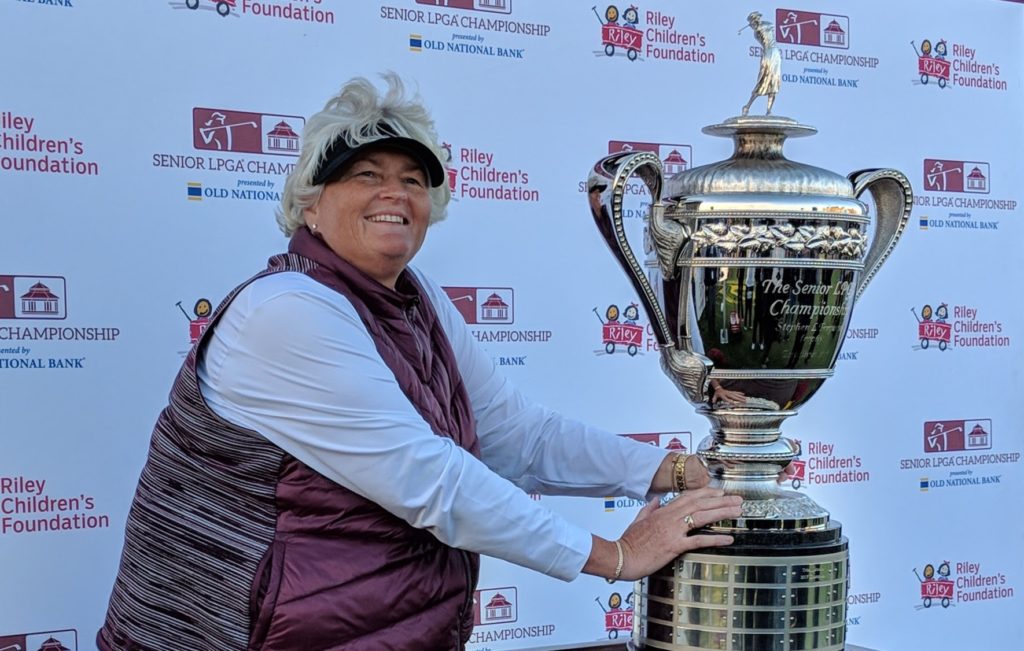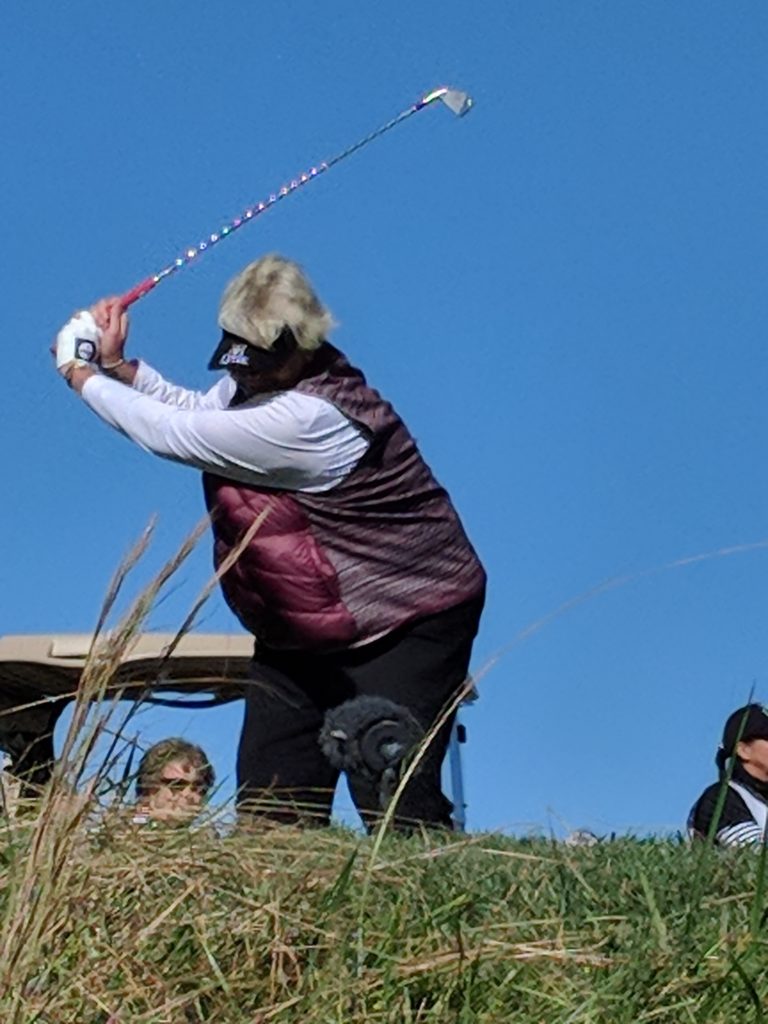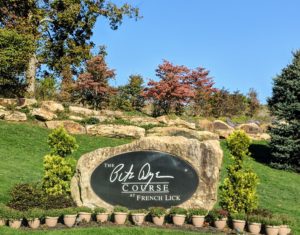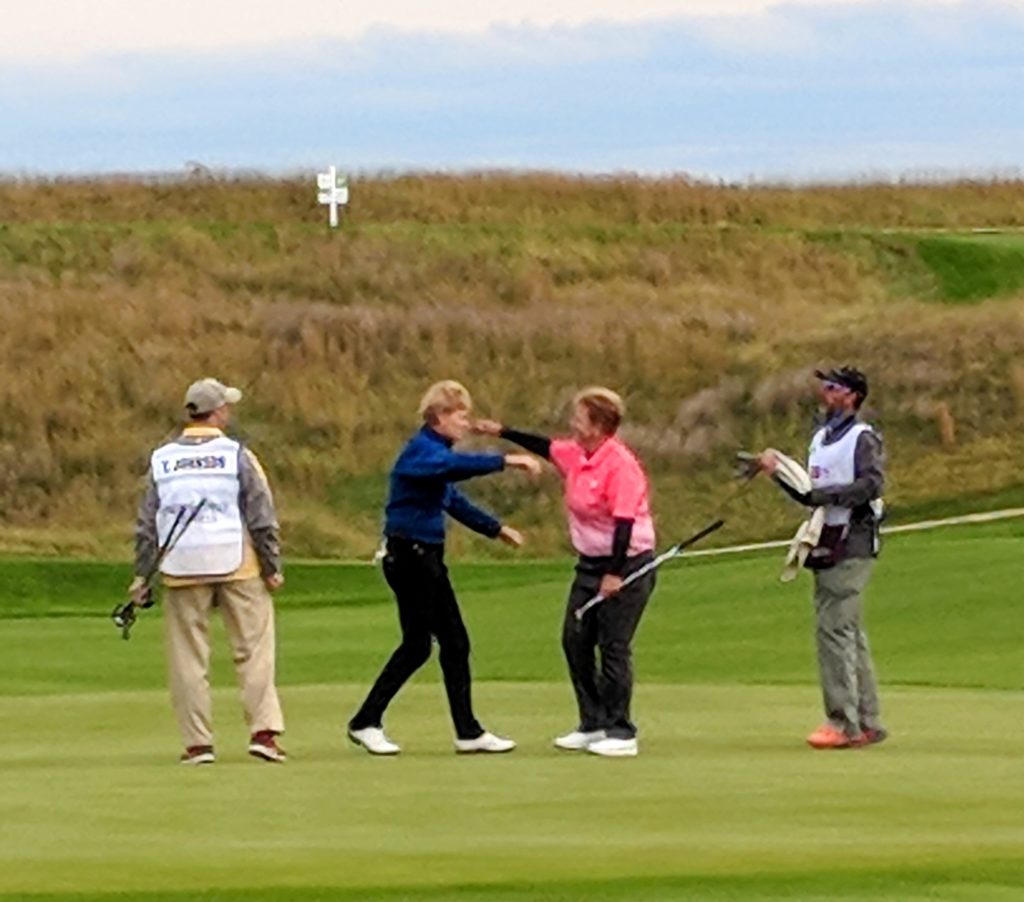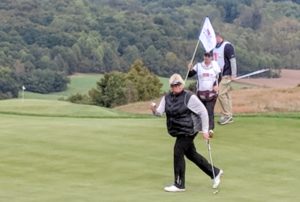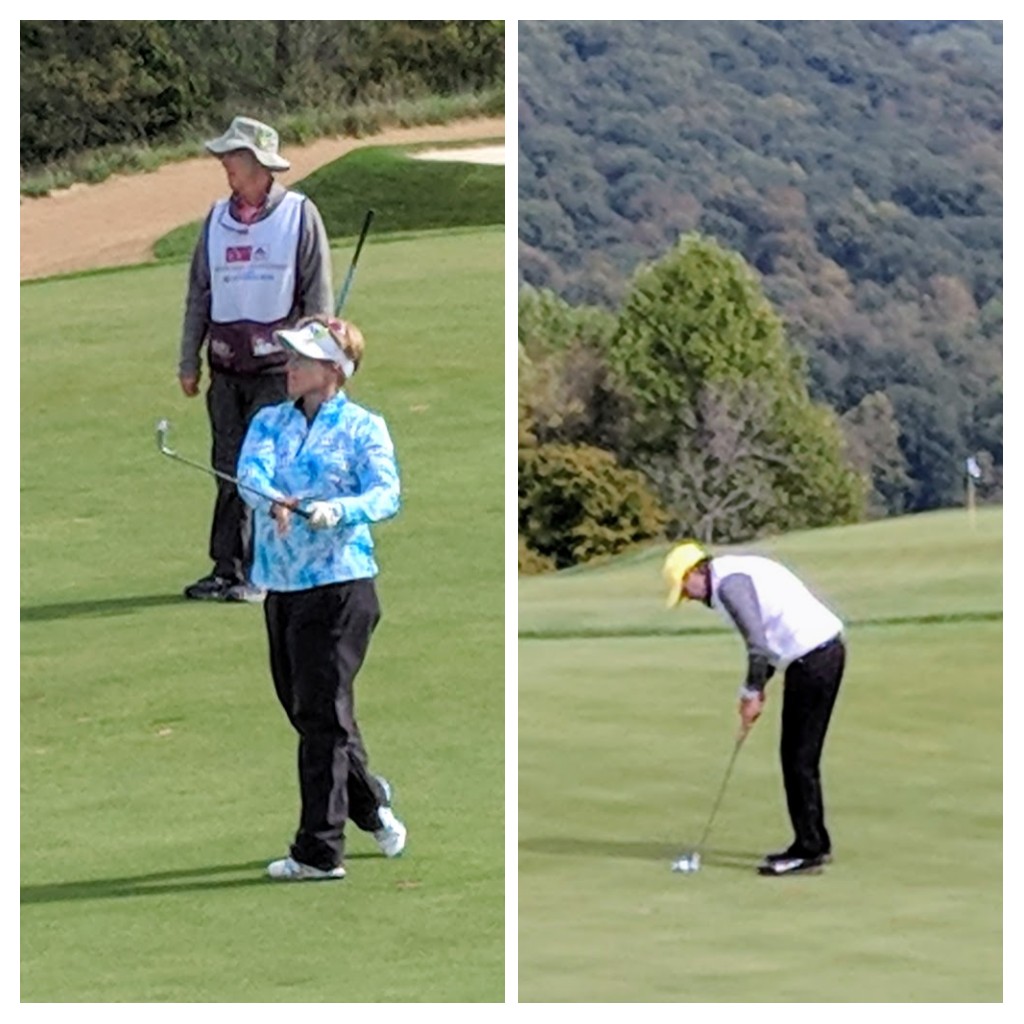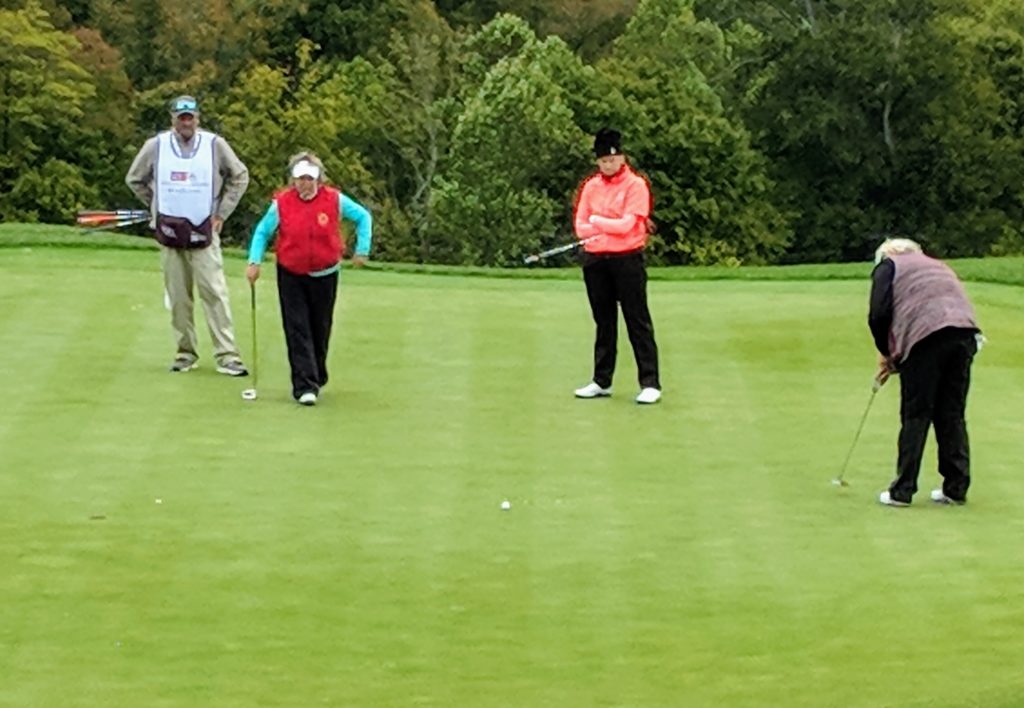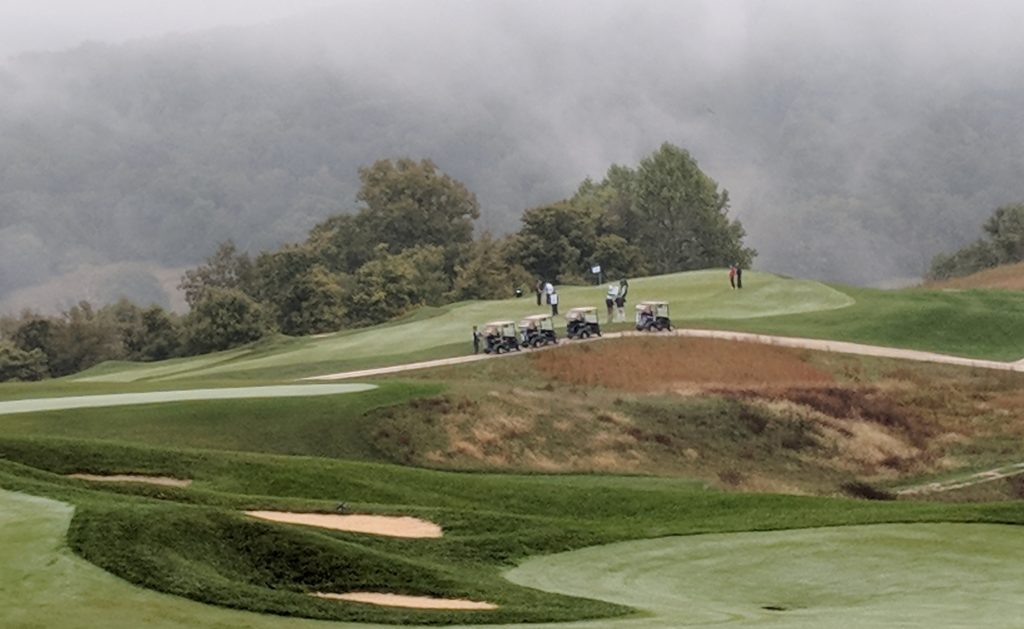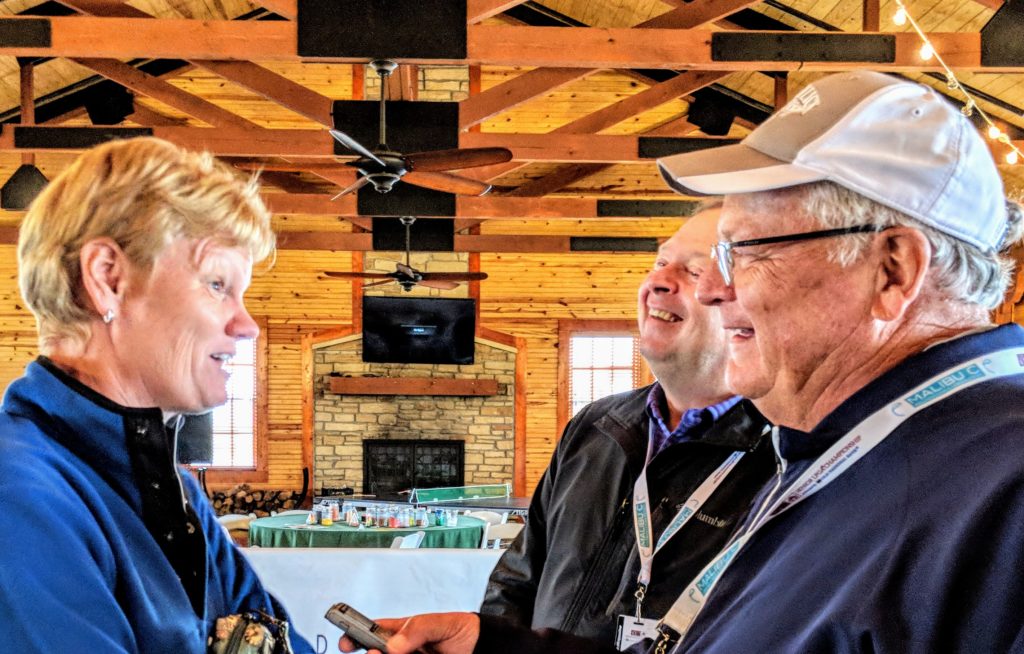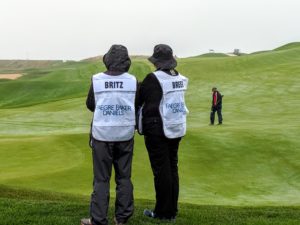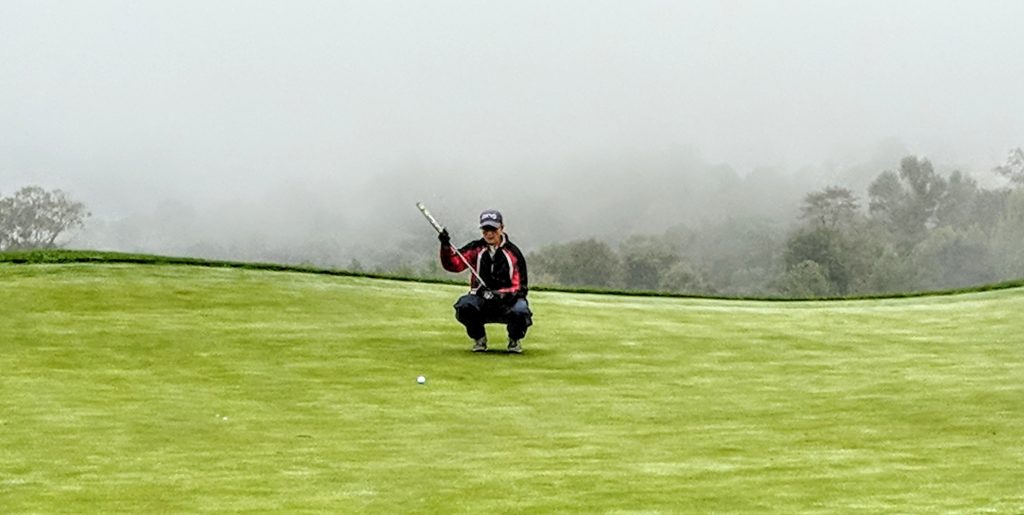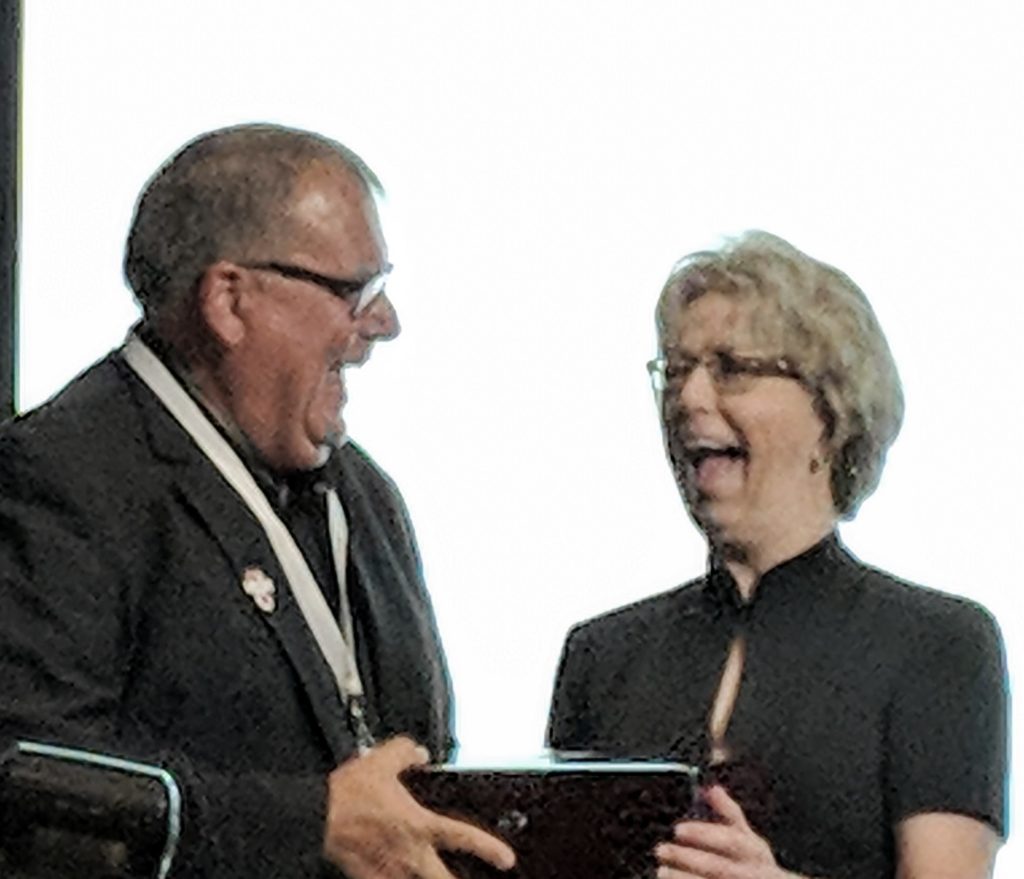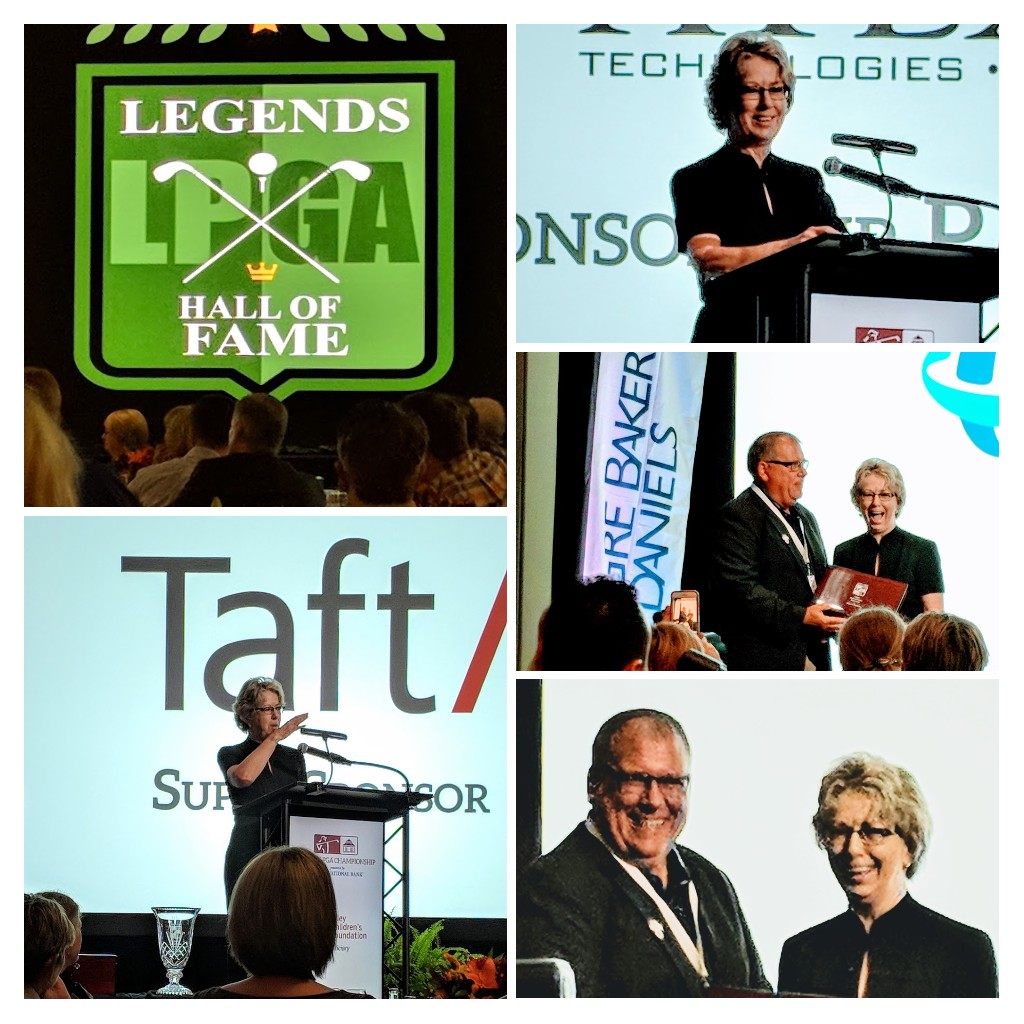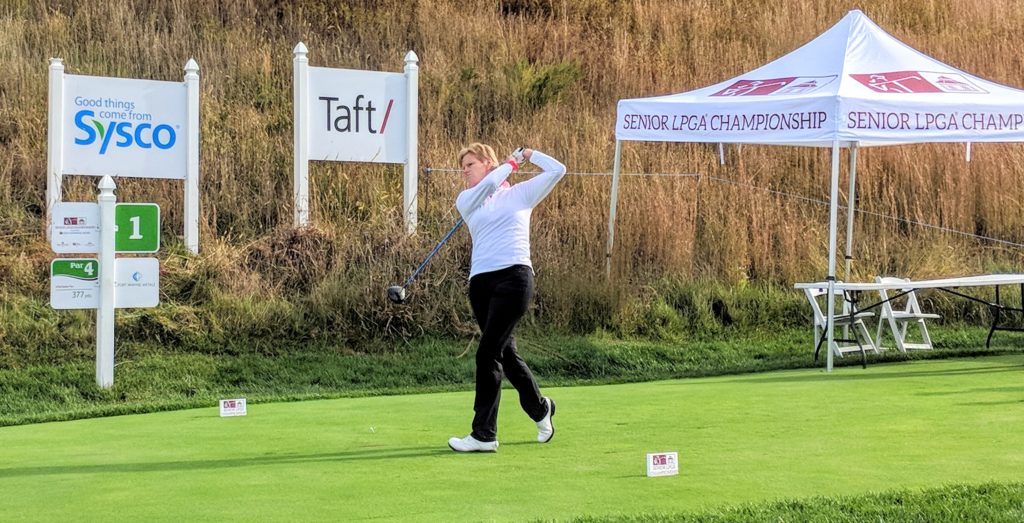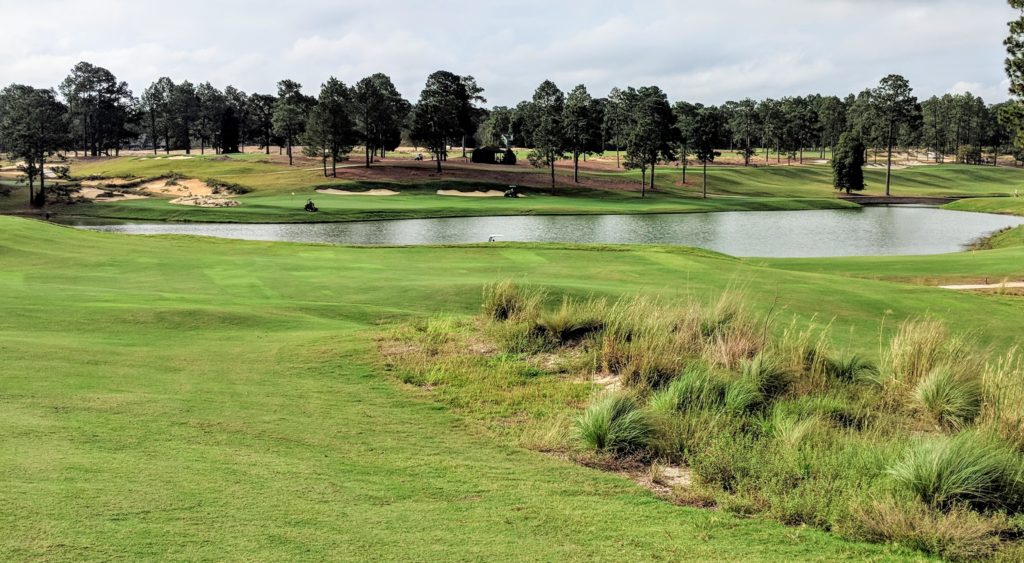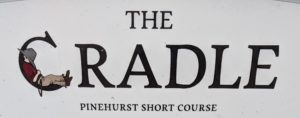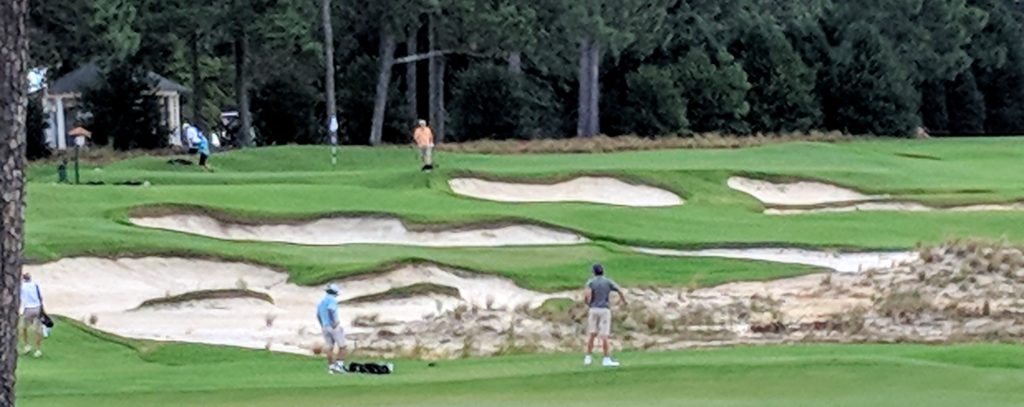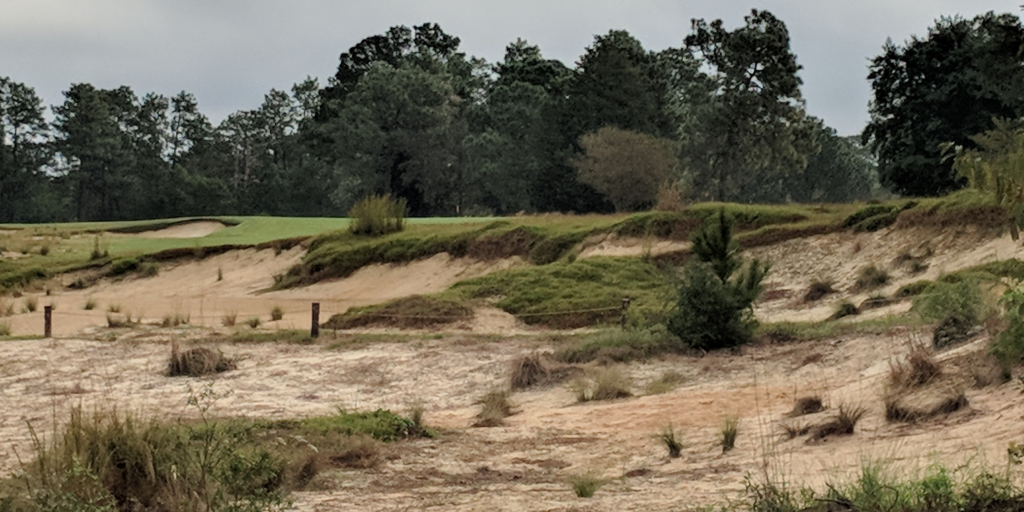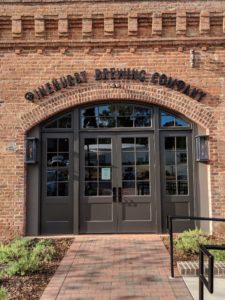FRENCH LICK, Indiana – This was a big year for the older women golfers who labored on the LPGA tour. After years of campaigning they had two major championships to compete in during the 2018 season and there was no doubt who the best player was.
England’s Laura Davies dominated. On Wednesday she was a wire to wire winner in the second Senior LPGA Championship on the Pete Dye Course in French Lick, Ind. In July she won the inaugural U.S. Senior Women’s Open at Chicago Golf Club by a whopping 10 strokes. That’s a Grand Slam, as far as that age group and gender is concerned.
The question now is, where does golf for these women’s stars of the past go from here. They finally have their long-coveted major championships, but not much else.
“If we could get a British Senior Open, that’d be great,’’ said Trish Johnson, the champion in the first of those senior majors at French Lick in 2017. “Who knows when that’ll be, but I’m sure it will happen eventually.’’
At least the two existing majors appear in good shape. The U.S. Senior Women’s Open, a big hit at Chicago Golf Club, has another quality venue for 2019 in Pine Needles in North Carolina. The Senior LPGA Championship is set at French Lick for three more years.
French Lick chairman Steve Ferguson and director of golf Dave Harner have shown their commitment to the senior women professionals, even taking the step of creating a Legends Hall of Fame in the West Baden Springs Hotel near the Pete Dye Course – a spectacular venue no matter who is playing on it.
For the momentum to grow, though, The Legends Tour will have to step up. The circuit created by Jane Blalock and 25 of her former LPGA colleagues in 2000 hasn’t had it easy. While the men’s PGA Tour was quick to embrace its aging stars, the LPGA has not.
While PGA Tour Champions continues to thrive for the men 50 and over, the LPGA – other than scheduling its one senior major championship – has steered clear of the players on The Legends circuit, which is open to former tour players who have reached their 45th birthday. Blalock played in the Honors Division of the second Senior LPGA at French Lick and then went home. None of her staff was utilized in the tournament’s operation, and their presence could have been helpful.
If progress is to continue for the senior women professionals it’ll apparently be up to The Legends Tour to carry the load. This segment of players needs more than two major tournaments to play in.
“I think we’ve got a good thing going,’’ said Juli Inkster, who won The Legends Championship in her first start in the circuit in 2015. “If we had six tournaments and four pro-ams that would be perfect. We don’t want to play every week.’’
The Legends had eight events on its 2018 schedule but two were pro-ams and two others were team events. Only the majors could be considered full-fledged tournaments. That’s not enough.
The greatest woman star of the recent past, Annika Sorenstam, hasn’t played a tournament since 2008 and Nancy Lopez, Beth Daniel, Meg Mallon, Amy Alcott and Betsy King have rarely ventured into Legends events. The shortage of tournaments is certainly a factor. Why work hard to get your game ready for just a couple tournaments?
Some appearances by the best of the stars of the best – most notably Sorenstam — would help The Legends cause.
“A lot of our players have taken 20 years off. They just want a chance to compete,’’ said Inkster. “It was impressive at Chicago Golf Club, having the people come out to watch. Stuff like that is really special.’’
There’s enough who can still play competitively, though, and they’re a global bunch. In the final round of the Senior LPGA only three of the nine players in the last three groups were Americans and the three majors were all won by Europeans. Unlike previous years, they now have a couple of showcase events to demonstrate their talents, but that isn’t enough.

